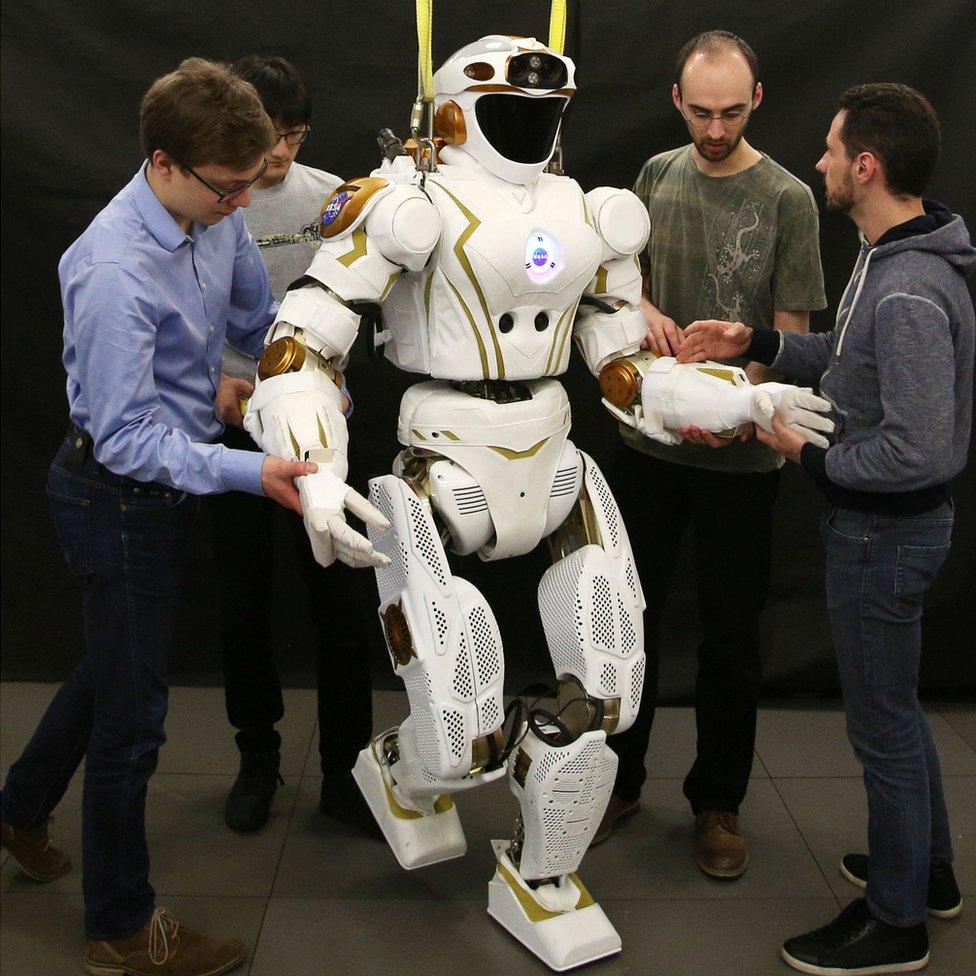Humanoid robot Valkyrie arrives at Edinburgh University
- Published
Nasa robot Valkyrie arrives in Edinburgh
A humanoid robot that could help build and maintain a habitat for humans on Mars has arrived in Scotland.
The 5ft 11in tall machine is being developed in a collaboration between Nasa and the University of Edinburgh.
Named Valkyrie, it can currently walk on two legs and perform basic movements but the team want to give it more sophisticated skills.
NASA plans to send Valkyrie to Mars ahead of the first manned missions to the Red Planet, expected in the 2030s.
The robot, which weighs nearly 20st (125kg), is one of only three prototypes in the world and the only one in Europe.
University scientists will seek to improve the robot's handling and walking capabilities, and use Valkyrie's sophisticated on-board sensors to help it make sense of its environment, and improve its manoeuvrability.

Researchers will also aim to further develop the robot's ability to interact closely and safely with humans and other machines.
Prof Sethu Vijayakumar, of the university's School of Informatics and director of the Edinburgh Centre for Robotics, said: "Valkyrie is a huge scientific undertaking.
"We are looking forward to tackling the many technical challenges involved in developing a large-scale humanoid robot, and pushing the state of the art in humanoid robotics."
Valkyrie's human-like shape is designed to enable it to work alongside people, or carry out high-risk tasks in place of people.
Named after a Norse spirit, the hope is that it could travel to Mars, many years before humans, to carry out preparatory tasks and maintain equipment there.